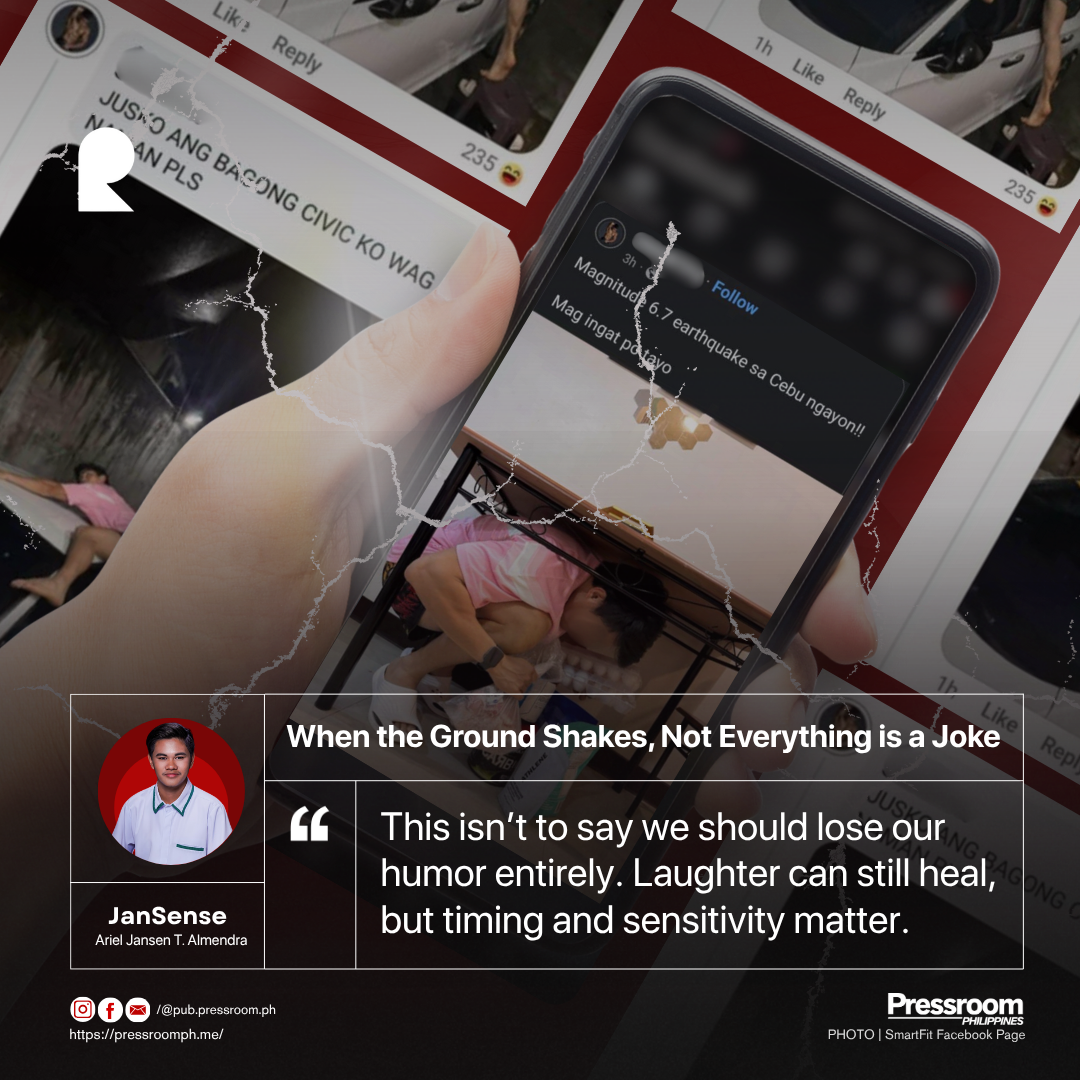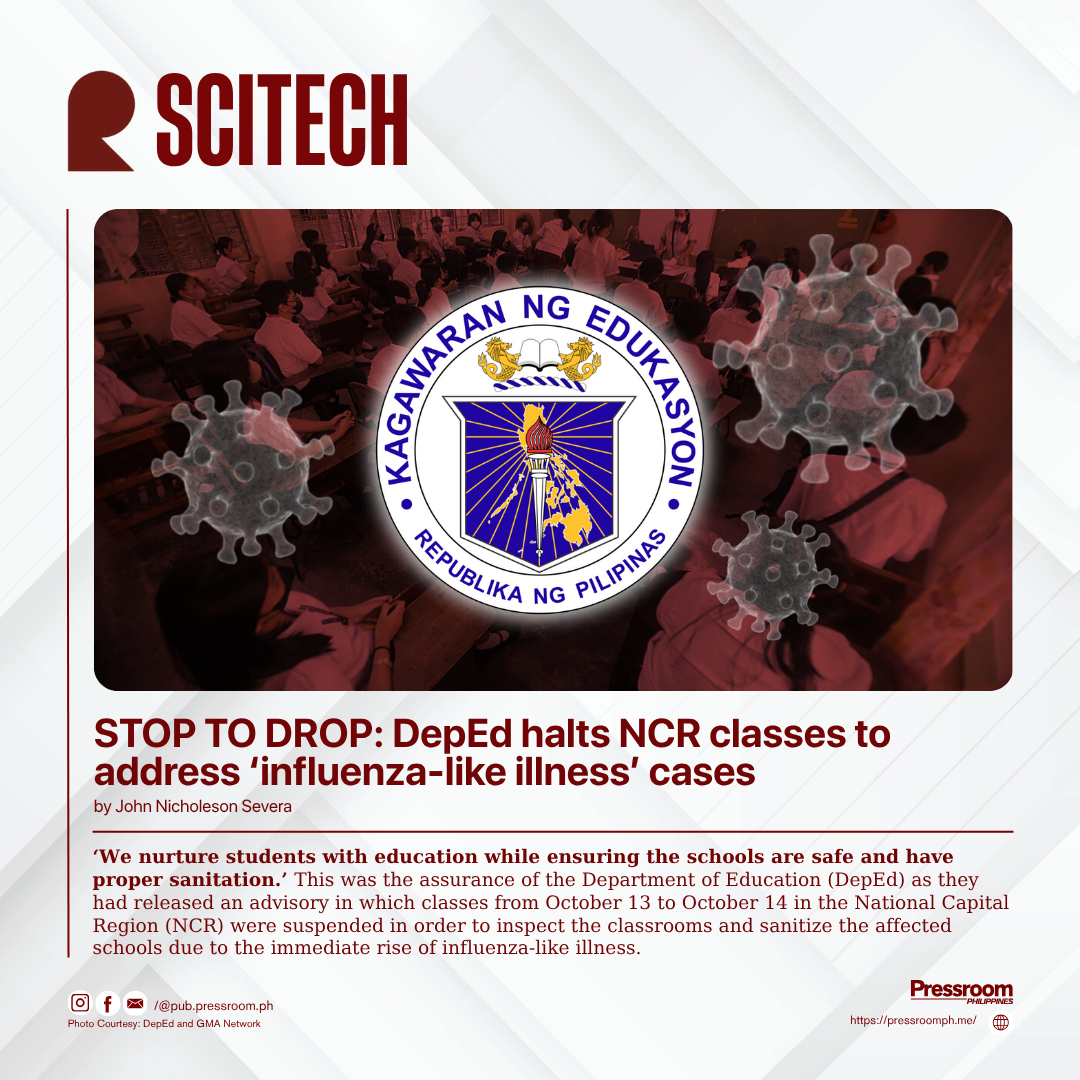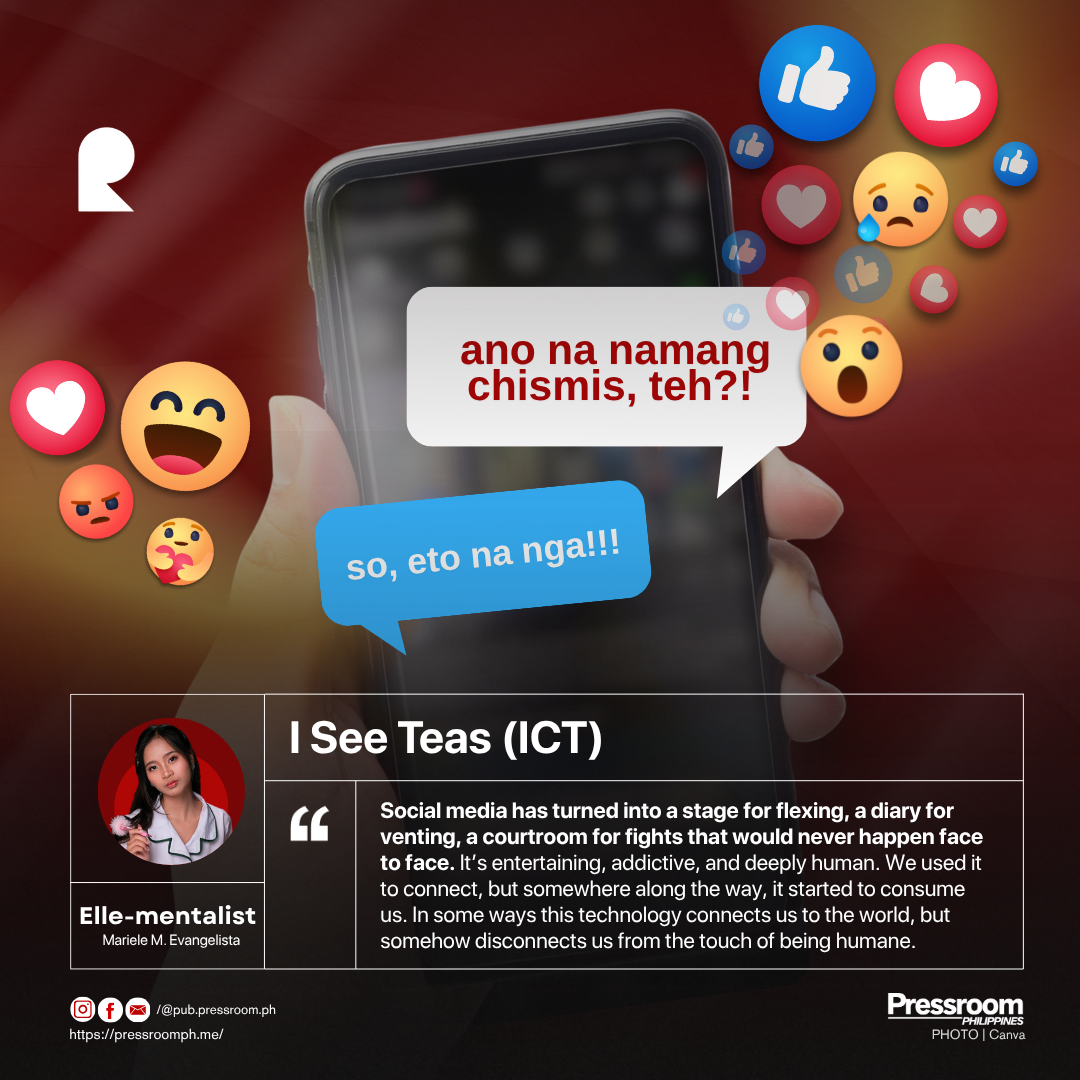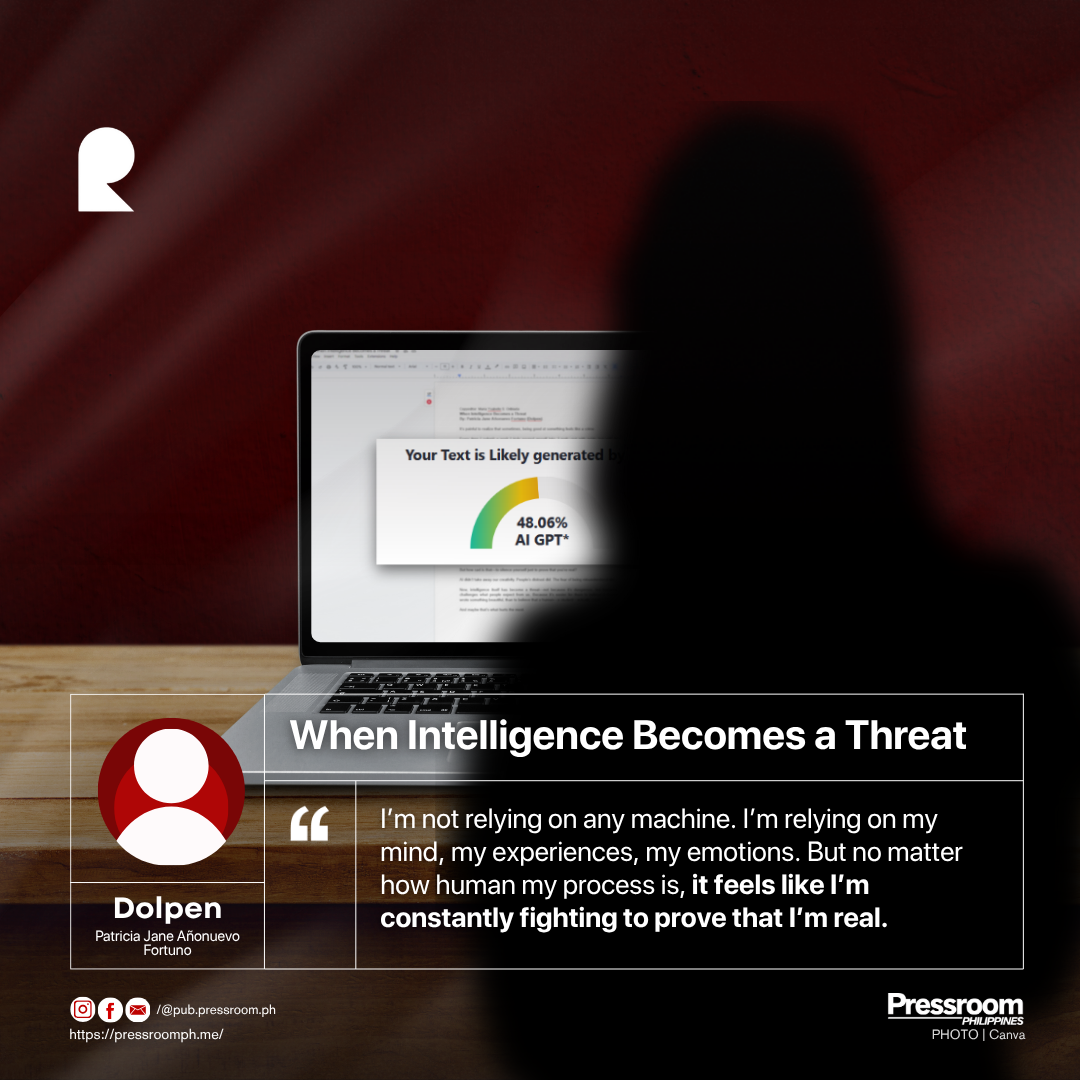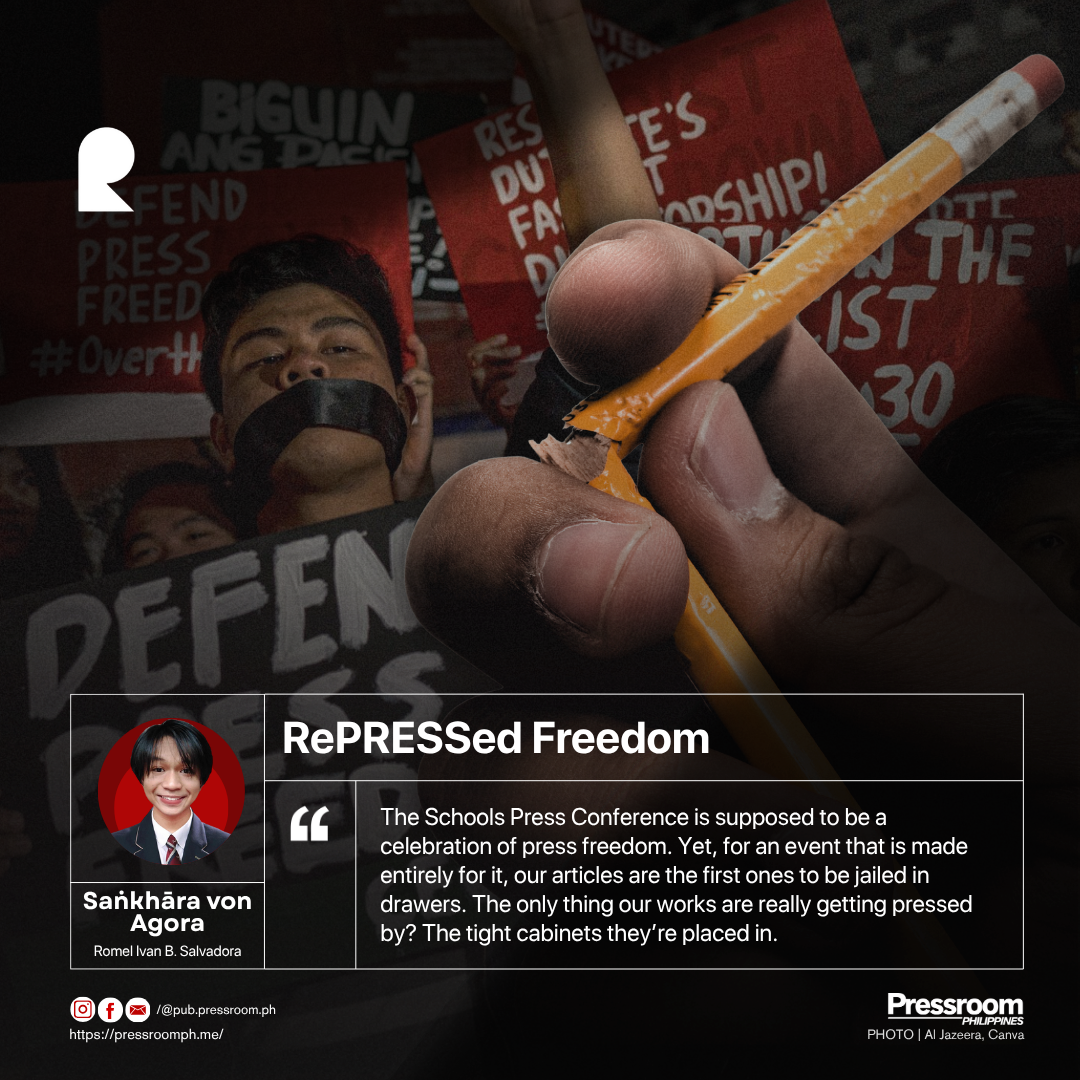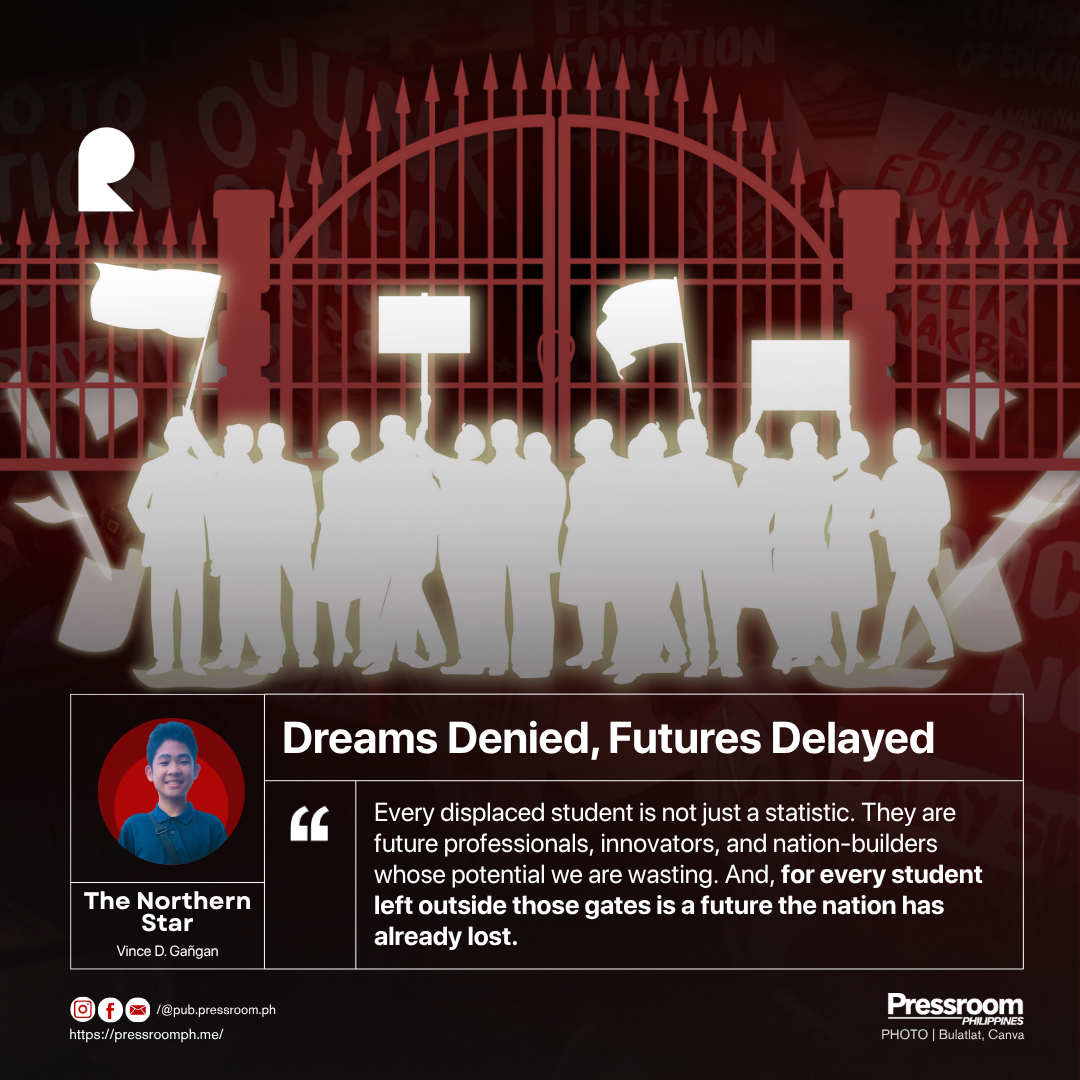via Ariel Jansen T. Almendra
After every tremor, there’s another kind of shaking that happens—not beneath our feet but across our screens. Meme after meme, “funny” tweets, and satirical posts flood social media as if earthquakes are comedy skits and not life-threatening disasters. Some say it’s a way to ease the fear. Others say it’s just “Filipino humor”, but should calamities really be the punchline?
It’s true that humor has always been part of Filipino resilience. We crack jokes during storms, share memes during typhoons, and make puns when the ground quakes. It’s our way of coping with fear and uncertainty. But there’s a very thin line between coping and being careless.
When we turn a natural disaster into a joke too quickly, we risk normalizing it. People may start to take real threats lightly. Some will laugh instead of evacuating. Some will scroll through memes instead of checking emergency alerts. And worse, survivors who lost their homes—or loved ones—may feel their pain is being dismissed for the sake of a few likes.
Earthquakes are no laughing matter. One collapsed building can change hundreds of lives. One delayed response can cost lives. So when people joke about “tumalon kasi si ano…” or “akala ko crush ko lang nagpapakilig,” it may sound harmless—but to someone who’s terrified or grieving, it isn’t.
This isn’t to say we should lose our humor entirely. Laughter can still heal, but timing and sensitivity matter. We can comfort each other without making fun of the calamity itself. We can share verified safety tips, encourage calmness, or offer support to those affected.
The ground may shake, but that doesn’t mean our empathy should. In times of disaster, the best thing we can share isn’t jokes—it’s care.
